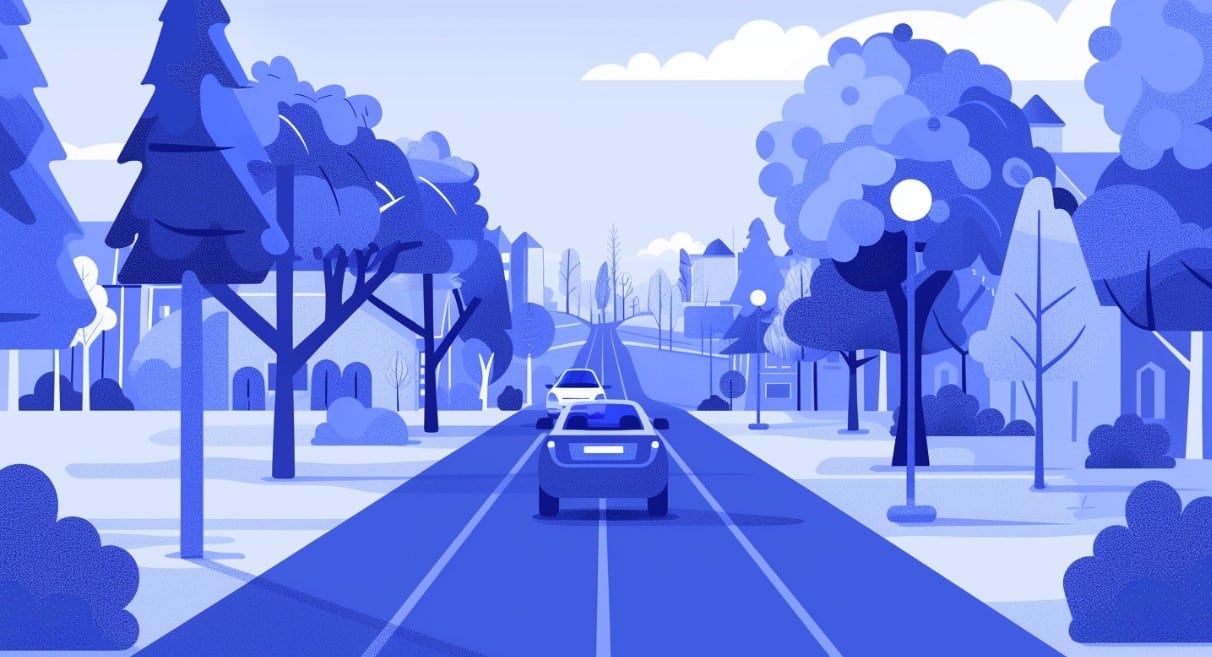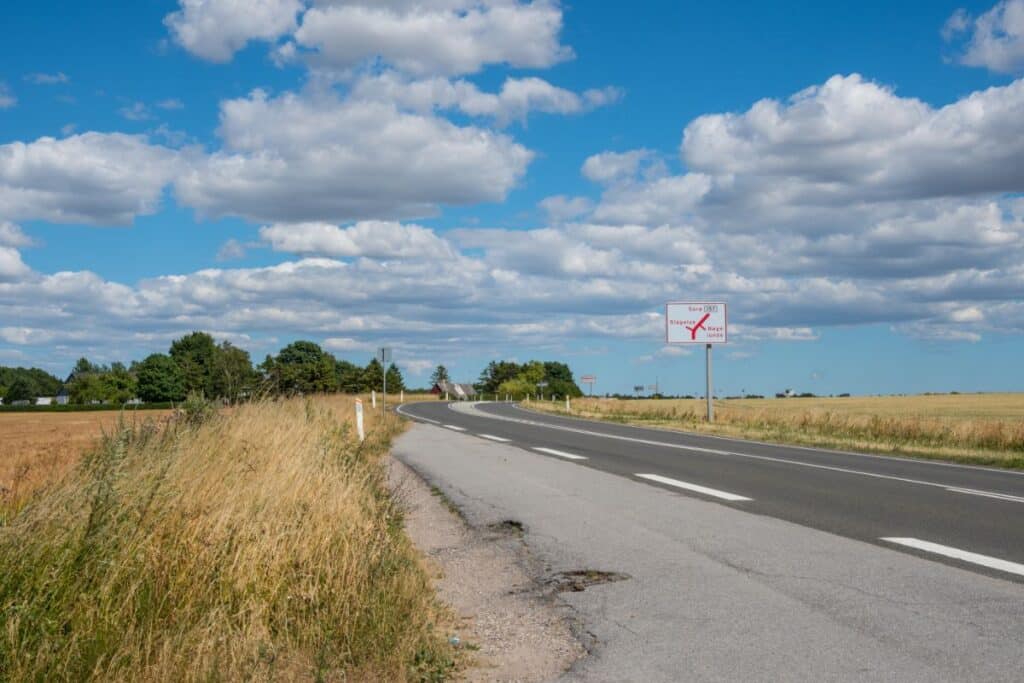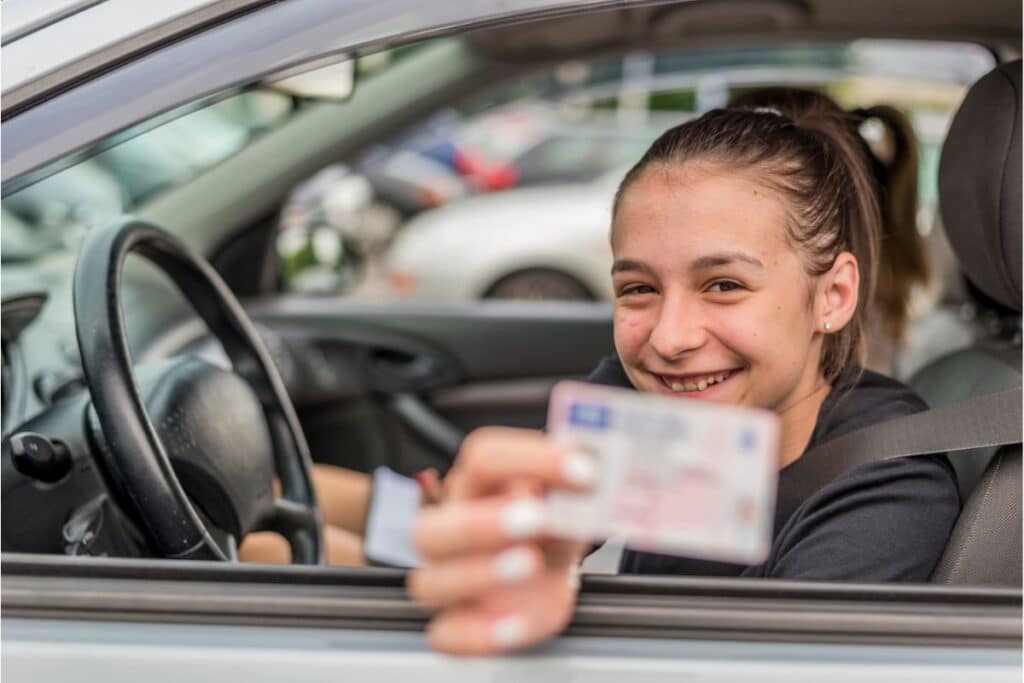Navigating the rules and requirements of a new country can be a daunting task, especially when it comes to driving. Whether you’re an expat, a long-term tourist, or an international student in Denmark, you may find yourself needing a Danish driving license. It’s not just a matter of being legally compliant – having a valid driving license in Denmark gives you the freedom to explore the country, commute to work, or simply accomplish your daily tasks more efficiently.
Whether you’re applying for your first driving license, transferring an international license to a Danish one, or renewing an existing Danish license, this guide is designed to simplify the process for you.
Key Takeaways
- Foreigners can use their existing license for a limited period, but may need to get a Danish license based on nationality and duration of stay.
- Various types of driving licenses exist in Denmark, suitable for different vehicle categories.
- The theory and practical tests are integral parts of the Danish driving license application process.
- The cost of obtaining a driving license includes driving school fees, test fees, and other charges.
- English is often an option for the theory test, but an interpreter may be needed for the practical test.
- The application process involves choosing a driving school, passing tests, and applying through local authorities.
- Awareness of Danish road rules and driving etiquette is crucial for safe driving in Denmark.
Who Needs a Danish Driving License
Understanding who needs a Danish driving license is a fundamental step in your journey. If you’re living in Denmark as an expat, a long-term tourist, or an international student, you may be wondering about the rules concerning driving licenses.
If you hold a valid driving license from your home country or an international driving license, you are generally allowed to drive in Denmark for up to 90 days after your entry. However, if you’ve established residency in Denmark – meaning you have lived in the country for over 185 days in a year – you are required to obtain a Danish driving license to continue driving legally. This rule applies regardless of whether you’re an international student staying for a study period, a professional expat, or a long-term visitor.
Remember, the key factor determining the requirement for a Danish driving license is your residence status, not your nationality. Having a Danish driving license helps you navigate the country’s roads legally and adds to your ease of living in Denmark, allowing you the freedom to move around as you need.

Types of Driving Licenses in Denmark
Before diving into the process of acquiring a driving license in Denmark, it’s important to understand the types of driving licenses available. In Denmark, driving licenses are categorized based on the type of vehicle you intend to drive. Each category has a corresponding letter code:
- Category B: This is the most common type of driving license, allowing you to drive private cars or vans with a maximum authorized mass not exceeding 3,500 kg and designed to carry no more than eight passengers in addition to the driver.
- Category A: This category is for those who wish to ride motorcycles. There are three subcategories: A1 for light motorcycles, A2 for medium motorcycles, and A for heavy motorcycles.
- Category C: This is for drivers who intend to drive vehicles over 3,500 kg (e.g., trucks). It has two subcategories: C1 for medium-sized vehicles and C for large vehicles.
- Category D: If you intend to drive a vehicle designed to carry more than eight passengers, you need a category D license. It also has two subcategories: D1 for smaller buses and D for larger buses.
- Category E: This category is an addition to the categories B, C, and D, allowing you to tow trailers that exceed the weight limit allowed in your existing license category. It is divided into BE, CE, and DE.
- Category T: This category allows you to drive tractors and other special vehicles.
The Category B license would be most applicable for most expats, long-term tourists, or international students. However, you should apply for the corresponding categories if you wish to drive motorcycles, heavy vehicles, buses, or tractors.

The Process of Getting a Danish Driving License
Understanding the process of obtaining a Danish driving license is key to navigating this journey smoothly. The process varies slightly depending on whether you are applying for a driving license for the first time or looking to exchange an existing international driving license. Here, we break down each scenario for you.
- Applying for the First Time: If you are applying for your first ever driving license, the process includes theoretical and practical driving lessons, a theoretical test, and a practical driving test. It’s important to note that driving lessons and tests are usually conducted in Danish, but in some driving schools, it’s possible to have lessons and tests in English or another language.
- Exchanging an International Driving License: If you already hold a valid driving license issued outside Denmark, the process of exchanging it for a Danish license depends on the country that issued your existing license. For instance, licenses from EU/EEA countries can generally be exchanged without a driving test, provided you meet the residency requirements. Licenses from certain other countries may also be exchanged without a test, under bilateral agreements. For all other countries, you will usually need to pass both a theoretical and a practical driving test.
- Renewing a Danish Driving License: If you already have a Danish driving license but need to renew it (for instance, due to expiry or loss), you must do so through the Citizen Service (“Borgerservice“) in your municipality. The process typically involves providing your identification, handing in a photo, and paying a fee.
Driving License Requirements for Foreigners in Denmark
Navigating the requirements for a Danish driving license may initially seem complex, but with the right information, it becomes manageable. The necessary requirements vary slightly depending on your situation – whether you’re applying for your first license or exchanging an international one. However, some basic prerequisites apply universally.
Basic Requirements
- Age: To apply for a Category B driving license (private cars), you must be at least 18 years old. The age requirements for other categories vary.
- Residency: You must have a usual residence in Denmark. This means you must live in Denmark for at least 185 days in one calendar year.
- Health: You need to meet certain health requirements, primarily related to your eyesight. In some cases, a medical certificate may be necessary.
For First-Time Applicants
- Driving Lessons: As a first-time applicant, you will need to complete a mandatory course of driving lessons, both theoretical and practical, at a driving school.
- Theory and Practical Tests: After your lessons, you will need to pass both a theory test and a practical driving test.
For Exchanging an International License
- Valid License: Your existing driving license must be valid and not suspended, restricted, or revoked in the issuing country.
- License Issued Pre-Residency: The license must have been issued before you established usual residency in Denmark.
- Tests: Depending on the country that issued your existing license, you may need to pass a theory test and a practical driving test.
In all cases, remember that regulations can change, and exceptions may apply depending on your specific circumstances. Always check with the official Danish authorities or your local municipality for the most accurate and up-to-date information.
The Driving Theory Test and Practical Driving Test
Acquiring a Danish driving license requires passing both theory and practical driving tests. The goal of these tests is to ensure you understand the rules of the road and can drive safely. Let’s break down each component to provide a clear picture of what to expect.
- The Driving Theory Test: This test assesses your understanding of the road rules in Denmark. It is usually taken after you’ve completed your theoretical driving lessons at a driving school. The test is conducted on a computer and consists of multiple-choice questions, based on images of different traffic situations. You will need to answer correctly to at least 20 out of 25 questions to pass. While the test is usually conducted in Danish, an English version is available at some test centers.
- The Practical Driving Test: This test evaluates your ability to operate a vehicle safely and effectively on Danish roads. It includes both a vehicle inspection, where you will need to demonstrate basic knowledge of the vehicle, and a driving part, where an examiner will accompany you on a drive in various traffic conditions. The test lasts about 45 minutes. It’s important to note that the driving test is generally conducted in Danish. However, you can have an interpreter for the test if necessary.
Preparation is key to successfully passing these tests. Many resources are available to help you prepare, including driving textbooks, online materials, and the theoretical and practical lessons at your driving school. Remember, driving safely and responsibly is not just about passing the test; it’s also about ensuring the safety of yourself and others on the road.
Cost of Getting a Driving License in Denmark

Obtaining a driving license in Denmark involves certain costs, which can vary depending on your specific situation and the driving school you choose. In this section, we provide an overview of the typical costs associated with getting a driving license in Denmark. Please note that these are approximate figures and can vary.
Driving School Fee
The major expense is the fee charged by driving schools. This fee typically includes the cost of theoretical and practical lessons. As of the time of writing, the average cost is approximately 10,000 to 14,000 DKK, but prices can vary depending on the school and location.
- Theory Test Fee: If you are required to take the theory test, you will have to pay a fee of around 600 DKK.
- Practical Driving Test Fee: The practical driving test fee is approximately 800 DKK.
- Medical Certificate Fee: Depending on your age and health status, you might be required to provide a medical certificate. The cost for this certificate can vary and is set by the doctor issuing it.
- Interpretation Fee (If Applicable): If you require an interpreter for the practical test, there will be an additional fee. This cost can vary widely depending on the language and the interpreting service.
- Additional Lessons: If you need more lessons than the standard package or fail a test and need to retake it, these will result in additional costs.
- License Issue Fee: Once you have passed your tests, there will be a fee to issue the license, which is currently around 280 DKK.
It’s crucial to plan for these costs when embarking on the journey of getting a Danish driving license. Remember to always check the latest fees with your chosen driving school and the relevant Danish authorities.
How to Apply for a Danish Driving License
Now that we’ve outlined the types of licenses, requirements, tests, and costs, let’s delve into the actual application process for obtaining a Danish driving license. Here’s a step-by-step guide to help you navigate this process:
- Determine Your Eligibility: First and foremost, ensure you meet all the basic requirements mentioned in section V. This includes age, residency status, and health conditions.
- Find a Driving School: Your next step is to find a reputable driving school where you’ll take your mandatory theoretical and practical lessons. Some driving schools offer courses in English or other languages, so choose one that suits your needs best.
- Enroll in a Driving Course: Enroll in a course at your chosen driving school. This typically involves theoretical lessons, practical driving lessons, and first aid training.
- Theory Test: Once you’ve completed your lessons, you’ll take the theory test. Remember to prepare thoroughly using your study materials.
- Practical Driving Test: After passing the theory test, you will be eligible to take the practical driving test. This involves demonstrating your knowledge of the vehicle and your driving skills in various traffic conditions.
- Application for the License: Once you have passed your tests, you can apply for the driving license at your local “Borgerservice”. You will need to bring your valid identification, a recent passport-sized photo, and your existing driving license (if applicable).
- Payment of Fees: At the time of application, you will be required to pay the license issuing fee. Remember to check the exact amount with your municipality.
- Receipt of the License: After your application has been processed and approved, you will receive your Danish driving license. The processing time can vary, so check with your local municipality for specifics.
Remember, the process may differ slightly depending on your specific circumstances. For example, if you’re exchanging an international license, you might not need to take the driving lessons and tests, depending on the country that issued your existing license. Always consult the latest information from official sources or your municipality.
Tips for Driving in Denmark

Congratulations! If you’ve followed the guide up to this point, you’re now on your way to getting a Danish driving license. But holding a license is just the first step. Knowing how to navigate Danish roads safely and responsibly is equally important. Here are a few key tips for driving in Denmark:
- Understand the Road Signs: Danish road signs might be different from what you’re used to in your home country. Familiarize yourself with the signs, their meanings, and their implications for drivers. Learn more here.
- Respect the Speed Limits: Speed limits in Denmark are strictly enforced. They generally range from 50 km/h in urban areas, 80 km/h on open roads, and 110-130 km/h on expressways. Always obey the posted speed limit signs.
- Beware of Bicyclists: Cycling is extremely popular in Denmark, and you’ll often share the road with many cyclists. Always be aware of their presence and give them the required space and priority where necessary.
- Adhere to Drink-Driving Laws: The legal blood alcohol concentration limit in Denmark is 0.05%. It’s always safer not to drink at all if you plan to drive.
- Use of Lights: In Denmark, it’s mandatory to use your vehicle’s dipped headlights at all times, day or night.
- Seat Belts: Wearing seat belts is mandatory for all vehicle occupants, both in the front and back seats.
- Parking: Always park in the direction of traffic and remember to pay attention to the parking signs to avoid fines.
By adhering to these tips, you will not only ensure your safety and that of others on the road but also demonstrate respect for the laws and customs of Denmark. Remember, being a responsible driver contributes to a smoother, safer driving experience for everyone.
Related: Everything you need to know about car lease in Denmark
Additional Resources
To ensure you’re well-equipped on your journey to obtaining a Danish driving license, we’ve compiled a list of additional resources that can provide more in-depth information and assist with your preparations.
- The Danish Road Safety Agency (Rådet for Sikkertrafik): The agency’s official website is a vital resource for the most accurate and up-to-date information on driving licenses. Visit Sikkertrafik for official guidelines (note: the website is in Danish).
- Driving Schools: Most driving schools have resources to help you prepare for the theory and practical tests. Ask your instructor for any additional materials they might provide.
- Theory Test Practice: There are various online platforms where you can practice for the theory test, such as Teoriklar. This can be an invaluable tool for passing the test. Learn more here.
- The Danish Police: The Danish Police website can provide information about road safety and traffic rules in Denmark.
- Local Municipalities: Check the website of your local municipality for specific information about driving licenses in your area. You’ll find more information here.
- Expat Forums and Groups: Online communities of foreigners in Denmark can be a useful source of tips and advice from people who have gone through the same process – Foreigners in Denmark on facebook is a good place to start.
FAQs
Can I drive in Denmark with my foreign driving license?
Yes, but the duration and conditions depend on your nationality. If you are from an EU/EEA country, you can usually use your license for as long as it is valid. If you are from outside the EU/EEA, you can generally use your license for up to 90 days. After this period, you might need to exchange it for a Danish driving license, or apply for a new one.
How long does it take to get a Danish driving license?
The process can take several weeks to a few months, depending on factors such as your driving school’s schedule, your own availability, and the waiting times for the theory and practical tests.
Can I take the Danish driving tests in English?
The theory test is available in English at some test centers. The practical driving test is usually conducted in Danish, but you can have an interpreter if necessary.
What happens if I fail the theory or practical test?
If you fail either test, you can retake it. However, you may have to wait for a certain period before your retake, and you may have to pay the test fee again.
Can I use my own car for the practical driving test?
No, the practical driving test is usually conducted in a car provided by your driving school. This car will have dual controls, allowing the examiner to intervene if necessary.
Related: Need a car loan? Learn more here